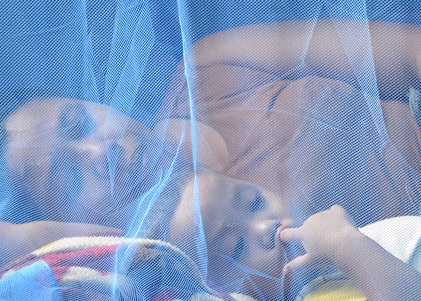5 things you might not know about malaria

Today, 25th April 2018, marks World Malaria Day a critical day to recognise the global efforts to control malaria. Here are 5 things you might not know about malara.
1. In 2016 cases of Malaria actually rose
In 2016 cases of Malaria rose by 5 million from 2015, with a total of 216 million cases of malaria in 91 countries
Around the world, 24 countries saw an increase of more than 50,500 cases in 2016, with Rwanda and Nigeria seeing 1 million new cases.
However, the number of deaths caused by malaria remained stable and declined for under 5’s from 440 000 in 2010 to 285 000 in 2016.
2. There are over 400 different species of Anopheles mosquito
Malaria is caused by the Plasmodium parasites which are spread to people through the bites of infected female Anopheles mosquitoes, known as malaria vectors.
Of these 400 species, 30 are vectors of significance. However, there are only 5 parasite species that can cause malaria in humans.
3. Much more investment is needed to beat malara
The annual investment needed by 2020 to meet the 2030 targets for Malaria is $6.5 billion, currently annual investment is only $2.7.
In 2016 the US was the largest malaria donor contributing 38% of all funding. The United Kingdom, France, Germany and Japan were also large contributors.
4. Africa is the worst effected region
Africa continues to be the continent which suffers the most from malaria with 90% of all reported cases and 91% of deaths.
Across the globe, 15 countries carry 80% of malaria cases, 14 of these are sub Saharan African.
In recent years, 7 countries have been certified by WHO as eliminating malaria; however, only one of these was in Africa, Morocco.
The other countries that have eliminated malaria in recent years are: United Arab Emirates, Turkmenistan, Armenia, Maldives, Sri Lanka, and Kyrgyzstan.
5. There are a diverse number of malaria prevention methods and treatments
Sleeping under an insecticide-treated net is the most common method used to prevent malaria and is often featured in charity appeals to prevent malaria spread. The numbers of people using mosquito nets has risen 25% since 2010.
Spraying the inside walls of homes is also a popular prevention method of but the number of people doing this has fallen by 80 million since 2010.
Since 2010, Africa has experienced a major increase in diagnostic testing rising from 36% of cases to 87% in 2016.
A new vaccine, Mosquirix, is currently being trialled in Africa to protect young children.
Drones are also being introduced to the fight against malaria. They are able to release thousands of sterilised mosquitos at one time and reduce the overall mosquito population.
The Asia Pacific Leaders Malaria Alliance will be one of the key speakers at the forthcoming AIDF Asia Summit, discussing how to raise awareness and financing to eliminate Malaria in Asia.
If you’d like to stay informed on the latest updates in aid and development, please sign up for the AIDF newsletter.
Image credit: Malaria Consortium















